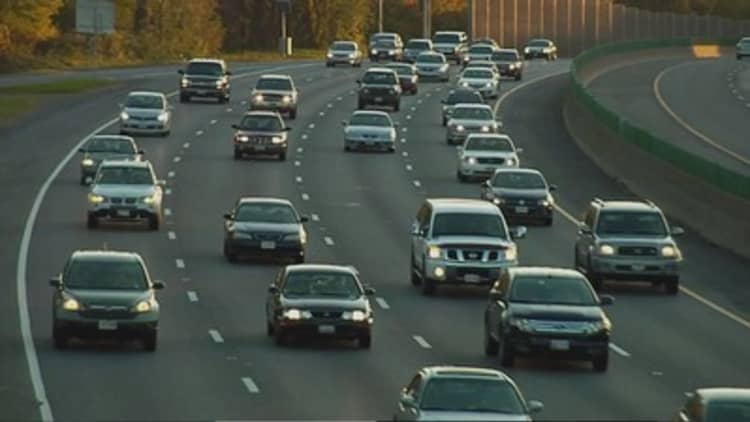
In cities across the world cycling is becoming an increasingly popular mode of transport. In the Netherlands, a country synonymous with two wheeled transport, one innovative project is looking to convert cycle paths – and roads – into clean energy generators.
The SolaRoad is made from pre-fabricated concrete slabs, 2.5 by 3.5 meters in size. The idea is that radiant heat and light will be captured through these solar panels rather than any energy made via the actual cycling.
The project has been developed by a consortium comprising Dutch research institute TNO, the Province of Noord-Holland, road construction firm Ooms Civiel and technical solutions provider Imtech.
"The idea we started with was 'wouldn't it be fantastic if we could harvest the solar energy that hits our road network, convert it to electricity and then perhaps even power the cars that drive over the roads?'," Sten de Wit, spokesman for the SolaRoad consortium, told CNBC in a phone interview.
De Wit explained that the project was possible thanks to funding of 3.5 million euros ($3.8 million), with 1.5 million euros coming from the province of Noord-Holland and the rest from the consortium's other partners.
According to SolaRoad, a translucent layer of tempered glass – roughly one centimeter thick – sits on top of the slab, with "crystalline silicon solar cells" below the glass. SolaRoad says that the top layer has also been designed to be dirt repellent, skid resistant and strong.
At the beginning of November, SolaRoad announced that a cycle path in the Dutch town of Krommenie – designed as a pilot demonstration of the concept – had generated 9,800 kilowatt hours of energy in one year, enough to supply three homes with electricity.
Commenting on the results from the pilot programme, de Wit said they slightly exceeded the team's upper expectations.
The project's plans are ambitious, and extend much further than the borders of the Netherlands.
In March of this year, the California Energy Commission announced that it had signed an agreement with the Province of Noord-Holland to swap information and "collaborate on innovative transportation energy projects."
The commission went on to state that the agreement would see the two authorities work together to identify "successful and economical models for electric vehicle charging infrastructure."
This, it added, includes the integration of renewable energy with transportation infrastructure such as SolaRoad.
Going forward, de Wit pointed to two routes SolaRoad was going down.
"Next year, we're going to extend the bike road with another 20 meters of an improved version… that will be the precursor towards more large scale bike roads in the order of one kilometer, for instance," he said.
The other direction being investigated is the application of the technology on conventional roads used by cars.
"The area that we have on our roads… (is) approximately twice what we have on our rooftops, and if you look at the distribution in the Netherlands, we have 140,000 kilometers of roads, and 120,000 kilometers are the smaller types of road – the municipal roads, smaller provincial roads."
"That is actually where we have the main focus, on these smaller roads which are not used as intensively as the highways but which have most of the area catching sun."





